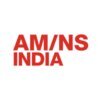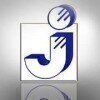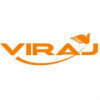Filter interviews by
JSW Group Tool & DIE Maker Interview Questions and Answers
JSW Group Tool & DIE Maker Interview Experiences
1 interview found
I applied via Campus Placement and was interviewed in Jul 2022. There were 2 interview rounds.

(3 Questions)
- Q1. Injection Tooling.And Press Tool
- Q2. Injection Die costing
- Q3. Die Costing. Press process
Interview Preparation Tips
Top trending discussions






Interview questions from similar companies

Tool & DIE Maker Interview Questions & Answers
Jindal Steel and Powerposted on 16 Feb 2024
I applied via Approached by Company and was interviewed in Aug 2023. There was 1 interview round.
(6 Questions)
- Q1. What is Tool & die
- Ans.
Tool & die refers to the specialized field of manufacturing and repairing tools, dies, and molds used in various industries.
Tool & die makers create and maintain precision tools, dies, and molds.
They work with materials like metal, plastic, and wood to produce parts and components.
Tool & die making involves using various machines, such as lathes, milling machines, and grinders.
These professionals interpret blueprints, ...
- Q2. The difference between Jig & fixtures
- Ans.
Jigs and fixtures are tools used in manufacturing to hold and guide workpieces during machining operations.
Jigs are used to guide and control the cutting tools, while fixtures are used to hold and position the workpiece.
Jigs are typically used for drilling, reaming, and tapping operations, while fixtures are used for milling, grinding, and turning operations.
Jigs are often more complex and expensive than fixtures due t...
- Q3. A Jig controls and guides the cutting tool to work predefiend location on workpiece. Fixtures are used for supporting and locating a workpiece
- Ans.
A jig is used to control and guide the cutting tool to a specific location on a workpiece, while fixtures are used to support and locate the workpiece.
Jigs are typically used in machining operations to ensure accuracy and repeatability.
Fixtures are often used in manufacturing processes to securely hold the workpiece in place.
Jigs and fixtures are essential tools in tool and die making, as they help in achieving precise...
- Q4. What is the moulding
- Ans.
Moulding is a manufacturing process used to shape liquid or pliable raw materials into solid objects.
Moulding involves pouring or injecting a material into a mould or die.
The material is then allowed to cool and harden, taking the shape of the mould.
Common materials used in moulding include plastics, metals, and ceramics.
Moulding is used in various industries such as automotive, aerospace, and consumer goods.
Examples o...
- Q5. The Difference between Conventional machining & non-conventional
- Ans.
Conventional machining refers to traditional methods of shaping and cutting materials, while non-conventional machining involves newer, unconventional techniques.
Conventional machining uses tools like lathes, milling machines, and drills to remove material through cutting, grinding, or drilling processes.
Non-conventional machining includes methods like laser cutting, electrochemical machining, and ultrasonic machining.
...
- Q6. The difference between injection molding & blow moulding
- Ans.
Injection molding and blow molding are two different processes used in manufacturing plastic products.
Injection molding involves injecting molten plastic into a mold to create a solid object.
Blow molding involves inflating a hollow tube of molten plastic to create a hollow object.
Injection molding is used for producing solid objects like bottle caps, while blow molding is used for producing hollow objects like bottles.
...
Interview Preparation Tips
- Production Department
- Press Tools
- Moulds
- VMC
- Ncn
- Grinding Machine
- Cylindrical Grinding
- Conventional Machines

I applied via Naukri.com and was interviewed in May 2021. There were 3 interview rounds.
Interview Questionnaire
1 Question
- Q1. Why you leave the privious company.
Interview Preparation Tips

Assistant Manager Interview Questions & Answers
Jindal Steel and Powerposted on 1 Dec 2020
Interview Questionnaire
1 Question
- Q1. First Technical round, second salary discussion....
Interview Preparation Tips

I applied via Campus Placement and was interviewed before Jan 2021. There were 5 interview rounds.
Interview Questionnaire
1 Question
- Q1. About insulation class of motors, working principle of induction motor
Interview Preparation Tips

I applied via Company Website and was interviewed in Jul 2018. There were 5 interview rounds.
Interview Questionnaire
2 Questions
- Q1. One important incident in your carrier where you think you have contributed effectively in your organization
- Ans.
Implemented a new customer feedback system resulting in increased customer satisfaction and retention rates.
Identified the need for a more efficient feedback system
Researched and implemented a new software to collect and analyze customer feedback
Analyzed the data to identify trends and areas for improvement
Implemented changes based on feedback leading to improved customer satisfaction and retention rates
- Q2. What extra zeal you have that You can be hired
- Ans.
I have a strong passion for leadership and a proven track record of motivating teams to achieve success.
Proven track record of successfully leading teams in previous roles
Passionate about developing and mentoring team members
Strong communication and interpersonal skills
Ability to problem-solve and make quick decisions under pressure
Interview Preparation Tips
Experience: Reasoning, English and core subject
Round: Test
Experience: Psychometric
General Tips: Be just yourself, don't lie an inch neither exxagerate things. Coj interviewer understands very quickly your caliber and vague things.
Skills: Communication, Body Language, Analytical Skills
Duration: >3 Months

I applied via Recruitment Consultant and was interviewed in May 2019. There were 3 interview rounds.
Interview Questionnaire
2 Questions
- Q1. Most important question-What have you done in previous organization and what's your roles?
- Q2. Tell me something about yourself? And All questions related to your resume (data written there)
Interview Preparation Tips
Any big issues which you have resolved during your career.

I applied via AmbitionBox and was interviewed before Dec 2021. There were 2 interview rounds.

(2 Questions)
- Q1. What are your Strength & Weakness.
- Ans. My Handwork is my strength and Food is my weakness.
- Q2. Why do you want to join this company
Interview Preparation Tips

Interview Questionnaire
4 Questions
- Q1. Detail ,in-depth question about core field.
- Q2. In-depth analysis of your job profile
- Q3. Detail analysis of your HR skill
- Ans.
Strong HR skills including recruitment, employee relations, training and development, and performance management.
Experience in full-cycle recruitment process, including sourcing, interviewing, and onboarding new employees.
Proven ability to handle employee relations issues effectively and confidentially.
Skilled in designing and implementing training programs to enhance employee skills and performance.
Proficient in condu...
- Q4. In-depth analysis of your behaviour under various situation

I applied via Company Website and was interviewed before Nov 2018. There were 5 interview rounds.
Interview Questionnaire
2 Questions
- Q1. Interviewer asked questions based on resume contents
- Q2. Just honest reply
Interview Preparation Tips
JSW Group Interview FAQs
Tell us how to improve this page.
JSW Group Interviews By Designations
- JSW Group Graduate Engineer Trainee (Get) Interview Questions
- JSW Group Assistant Manager Interview Questions
- JSW Group Safety Officer Interview Questions
- JSW Group Electrical Engineer Interview Questions
- JSW Group Civil Engineer Interview Questions
- JSW Group Electrician Interview Questions
- JSW Group Mechanical Engineer Interview Questions
- JSW Group Engineer Trainee Interview Questions
- Show more
Interview Questions for Popular Designations
- Tool Maker Interview Questions
- Tool & DIE Maker(Tool Room) Interview Questions
- Operator Interview Questions
- Technician Interview Questions
- Barista Coffee Maker Interview Questions
- Electrical Technician Interview Questions
- Diploma Mechanical Engineer Interview Questions
- Diploma Electrical Engineer Interview Questions
- Show more
JSW Group Tool & DIE Maker Interview Process
based on 1 interview
Interview experience
Interview Questions from Similar Companies
Fast track your campus placements
|
Assistant Manager
283
salaries
| ₹4.9 L/yr - ₹13 L/yr |
|
Graduate Engineer Trainee (Get)
165
salaries
| ₹5.5 L/yr - ₹11 L/yr |
|
Deputy Manager
124
salaries
| ₹6.2 L/yr - ₹21 L/yr |
|
Manager
81
salaries
| ₹8.7 L/yr - ₹23 L/yr |
|
Senior Engineer
74
salaries
| ₹5 L/yr - ₹9 L/yr |

Tata Steel

JSW Steel

Jindal Steel and Power

ArcelorMittal Nippon Steel
- Home >
- Interviews >
- JSW Group Interview Questions >
- JSW Group Tool & DIE Maker Interview Questions



















